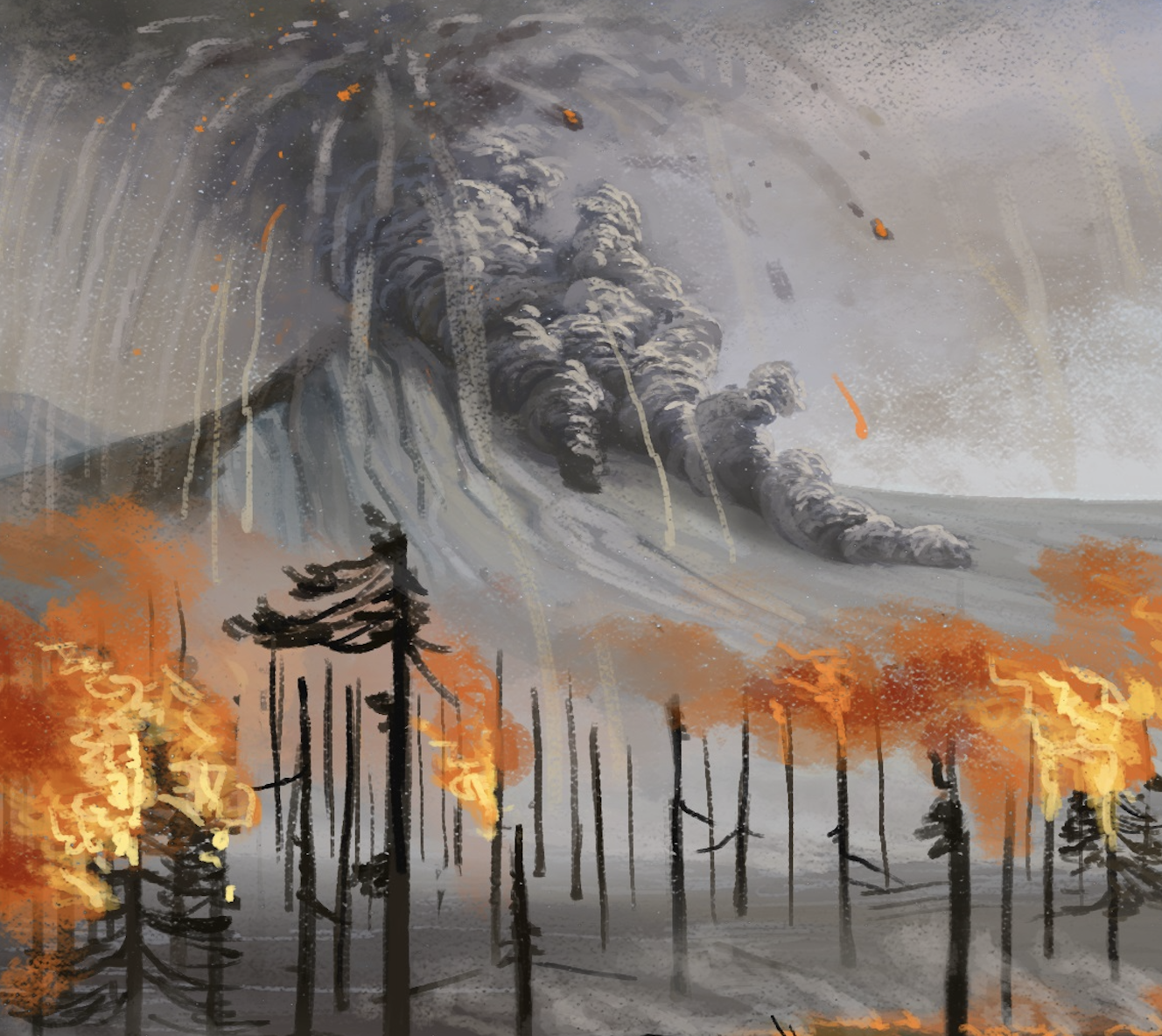Ancient Wildfires Shaped Antarctica and the Atacama Desert into the Most Extreme Places on Earth


Millions of years ago – where the perpetual ice of Antarctica and the dry dust of the Atacama Desert today stretch – lush forests flourished, full of araucaria trees, giant ferns, and vegetation that would seem unimaginable today. How did these verdant ecosystems transform into two of the most extreme places on Earth?
Paleobotanist Joseline Manfroi, a researcher at the Atacama Paleontology and Natural History Research and Advancement Corporation (CIAHN Atacama) and a pioneer in the study of ancient fires on the frozen continent, is reconstructing this forgotten history through fossils of leaves, wood, roots, and even traces of fire trapped in rock. These clues suggest that fire was a constant presence during the Cretaceous period, fueled by an oxygen-rich atmosphere and intense volcanic activity.
“These fires occurred many times and acted as an evolutionary pressure on the forests that existed in Antarctica some 75 million years ago,” Manfroi says. Fire, she notes, was a shaping force in those ancient landscapes — more sculptor than enemy, carving the terrain from the South Pole to northern Chile and even southern Brazil.
Her research is supported by CIAHN Atacama, the Chilean Antarctic Institute, the Brazilian Antarctic Program/CNPq (Paleoclima and Florantar projects), the Polar and Climate Center at UFRGS, and Chile’s National Agency for Research and Development (ANID).
The Cretaceous Period Supplied Elements for Fire
For fire to exist, three elements are needed: fuel, heat, and oxygen. During the Cretaceous, when dinosaurs still ruled the Earth, none of these elements were in short supply. Dense forests, active volcanoes, and an atmosphere with oxygen levels close to 30 percent created the perfect conditions for everything to burn.
“It was the only period that brought together those ideal conditions for fires,” Manfroi points out.
There wasn’t just one Vesuvius or one Pompeii: what existed were constant pyroclastic clouds — clouds of ash and gases — and hot rains that caused recurring forest fires. The flames consumed leaves, trunks, and roots, which were preserved in the volcanic ash. Then, nature re-covered the land — not necessarily with the same species — until the fire returned.
“From fossils, we can even determine the temperature of the fire: that vegetation burned at 900 degrees Celsius [about 1650 degrees Fahrenheit],” she says.
Read More: Did an Ancient Civilization Ever Live in Antarctica?
Fire in Antarctica
Fossil plants are witnesses of a green Antarctica (Image Courtesy of Joseline Manfroi)
Manfroi has discovered fossilized plants, primarily gymnosperms, with these characteristics in several locations across the frozen territory, including Nelson and King George Islands in the South Shetland archipelago. She is currently analyzing new samples collected on Vega Island, northwest of the Antarctic Peninsula.
While volcanism was a common ignition source, it wasn’t the only one: the researcher has also identified wood burned by lightning, which is now under study.
This seemingly apocalyptic scenario wasn’t confined to Antarctica. It also affected Patagonia, parts of Brazil — a study on that region is forthcoming — and even the present-day Atacama Desert.
According to Manfroi, both Atacama and Antarctica contain “incredible, intact fossils of the same araucaria trees” along with evidence of paleofires and ancient forests. “These places, so dissimilar today, share a common geological past,” she says.
Antarctica’s Paleofires and the Atacama Desert
But fire alone doesn’t explain the disappearance of the forests that once covered the southern part of the world. It was tectonic movements, ocean currents, and the uplift of the Andes that shaped the climates we know today.
“The Atacama Desert wouldn’t exist if it weren’t for the separation of Antarctica from South America,” explains Manfroi, revealing a forgotten piece of the great terrestrial puzzle that was the paleocontinent Gondwana.
The opening of the Drake Passage — the body of water that separates Cape Horn from the South Shetland Islands — between 34 million years and 30 million years ago, allowed for the formation of the Antarctic Circumpolar Current. This great ocean current swirls from west to east around the white continent, preventing the entry of warm waters and thus sealing its icy fate.
At the same time, its appearance “interfered” with the rise of the Humboldt Current, which flows from south to north across the Pacific and carries very cold waters to the northern Chilean coast.
“Its evaporation is different, very slow — compared to what happens on the Atlantic side of the continent — and that’s why clouds and rain don’t form,” explains Manfroi.
Climate Impacts of Today
As if that weren’t enough, the Andes Mountain range rose like a wall, blocking moisture-laden clouds coming from the east, from the Amazon. Thus, between cold seas and towering mountains, the most arid climate on the planet was woven.
“Northern Chile and the Antarctic continent have suffered a progressive process of deforestation over the last 66 million years as a result of the displacement of continental masses,” explains Martín Chávez, scientific director of CIAHN Atacama. “What were once forested regions today only harbor plants that have had to adapt to extreme conditions to survive.”
With the retreat of ice driven by climate change, could both regions regain their former greenery? Manfroi rules it out, unless their location on the globe changes radically, something not expected to happen for several million years.
Read More: The Most Interesting Archeological Finds Discovered in Antarctica
Article Sources
Our writers at Discovermagazine.com use peer-reviewed studies and high-quality sources for our articles, and our editors review for scientific accuracy and editorial standards. Review the sources used below for this article:
María de los Ángeles Orfila is a science journalist based in Montevideo, Uruguay, focusing on long-form storytelling. Her work has appeared in Discover Magazine, Science, National Geographic, among other outlets, and in leading Uruguayan publications such as El País and El Observador. She was a fellow in the 2023 Sharon Dunwoody Mentoring Program by The Open Notebook and often explores the intersections of science, culture, and Latin American identity.



:max_bytes(150000):strip_icc()/Health-GettyImages-DrinksForGutHealth-e0c1f46d4d5543f2b0da68f4dba39d24.jpg?w=390&resize=390,220&ssl=1)